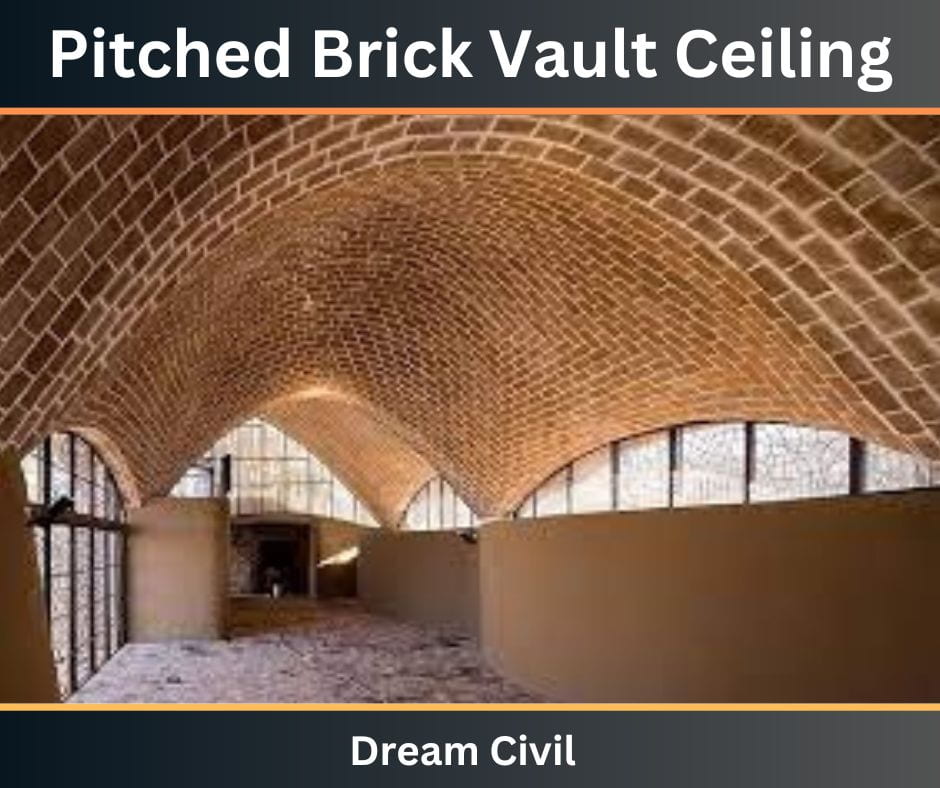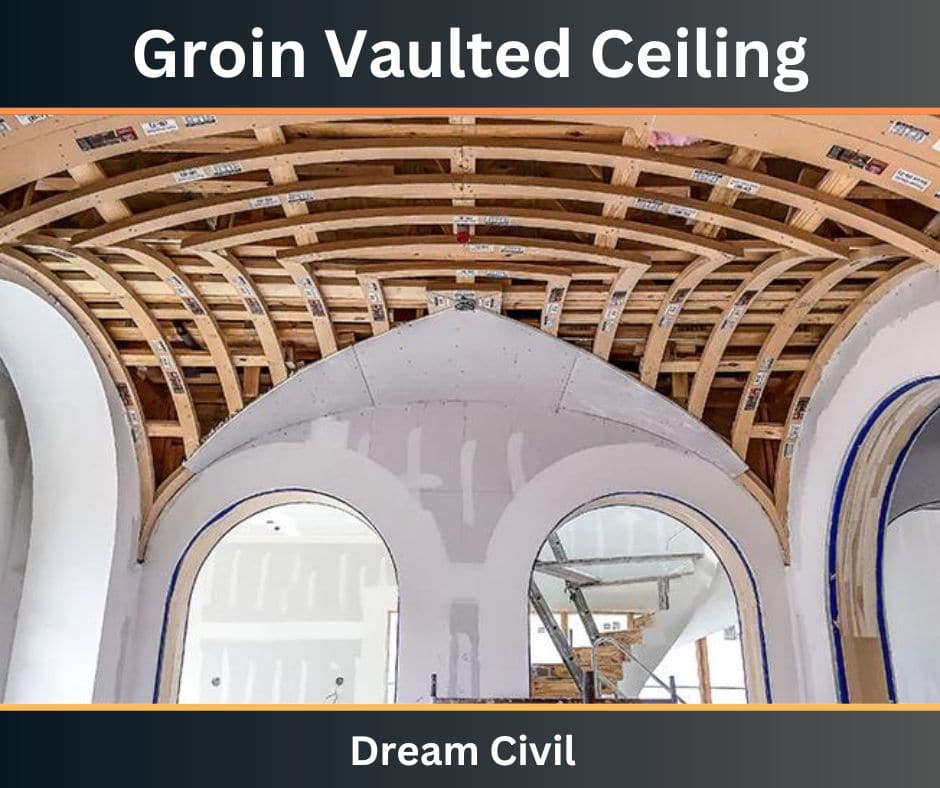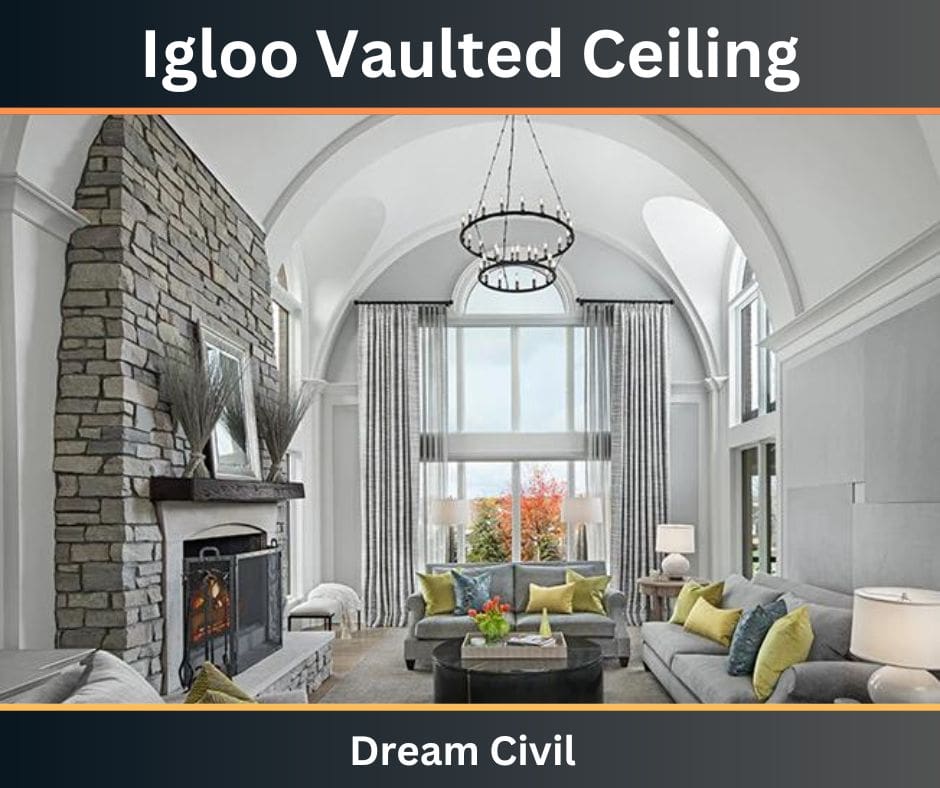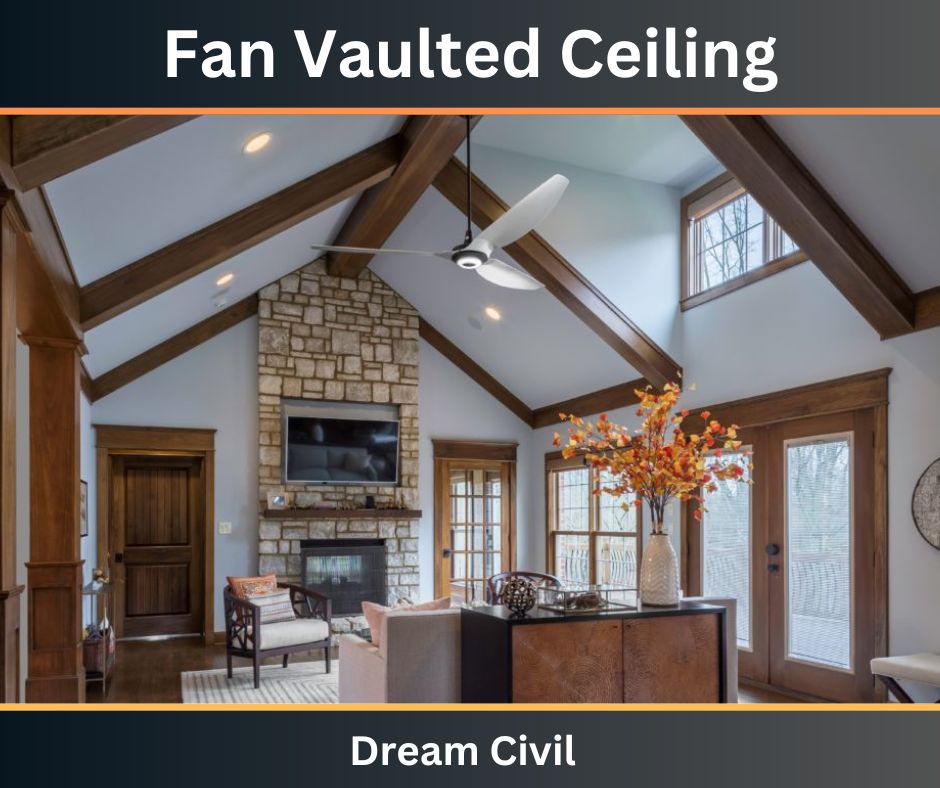Table of Contents
A vaulted ceiling may be described as a ceiling that is angled upwards toward the roof to advance over the standard 8′ to 10′ height of a flat ceiling.
Vault ceilings are a famous ceiling design choice for modern architecture since it permits more sunlight and can be integrated into all types of designs.
1. Types Of Vaulted Ceilings
The 10 types of vault ceiling designs that can be used for upcoming projects are mentioned below:
a. Barrel Vault Ceiling
Ceilings with vaulted barrels are very much uncomplicated in impression, and they’re just one arch, which is duplicated across the whole length of the room.
We can decorate with a fancy style to create the room look more appealing to a more outstanding extent or left as is for a plain elegant and elegant look.
Barrel vaults are excellent for hallways since they make the appearance of being in a tunnel. They also look amazing in foyers and media rooms.

b. Dome Vaulted Ceiling
The domed ceiling is very famous constructed by dipping a dome into a flat ceiling. Most of the moment, they just cover a part of the ceiling. Dome ceilings are more challenging to construct when you try to improve their height.
It is suggested to accent the dome’s vaulted ceiling by employing crown molding to gain a dramatic impression without expanding the height of the dome. These are not suggested for bedrooms but can be selected for entrance lobbies or halls.

c. Pitched Brick Vault Ceiling
The pitched brick vault ceilings are a traditional style formation that provides an urban look to the ceiling.
A pitched brick vault is made by putting bricks vertically, depending on an angle that frees the vault from depending on the center to finish (In short, bricks are positioned in a tilted design).

d. Groin Vaulted Ceiling
The groin-vault ceilings are constructed of interlocking two-barrel type vaults with the exact dimensions and length. These types of vault ceilings are straightforward to imagine in mind but challenging to execute during the period of construction.
The groin is the edge that is between intersecting vaults. Sometimes, the arches of vaults with groins are pointed, not round.

e. Cove Vaulted Ceiling
This type of vault ceiling is excellent if you are peeking for an around-corner ceiling. The cove-style ceiling can deliver your room with a smart, sleek peek with rounded edges and corners.

f. Cloister Vaulted Ceiling
The cloister vault ceiling contains a type of various spring lines and spring points. At these points, the arch starts to curvature, in this example, on a wall, each arching near the identical point. This makes the formation of a vault for cloisters.

g. Grome Vaulted Ceiling
Grome vaulted ceiling is a combination of two various vault ceilings; the dome and the groin-vault ceiling. With this ceiling, you can bring an enticing and special impression.

h. Igloo Vaulted Ceiling
Igloo vault ceilings are occasionally termed lunette vault ceilings, and they are just barrel-vault ceilings with arches cut out.
You can set windows and other things under these arches without obstructing the ceiling.

i. Rib Vaulted Ceiling
This type of vault ceiling looks identical to a groin-vault ceiling, but these are formed with diagonal ribs, diagonal stripes, and a sequence of arched shape strips. This provides structural durability and flexibility.

j. Fan Vaulted Ceiling
The fan vault ceiling is identical to the rib ceilings, but here ceilings are created with equal distances of smaller ribs that give a fan appearance look. Fan-vault ceilings support the beam throughout the ceiling length.

2. Advantages Of Vaulted Ceilings
The advantages of vaulted ceilings are as follows:
a. It increases aesthetic beauty.
b. It provides open space.
c. Allow exit of Hot air
d. Increases Natural Sunlight
e. Green Building Alternative
3. Disadvantages Of Vaulted Ceilings
The disadvantages of Vaulted ceilings are as follows:
a. Rise in Construction Costs.
b. Energy Inefficiency
c. Difficult to clean & change light bulbs, fans, etc.
4. References1. Content Filter & Authenticity Checking Team, Dream Civil International (Our team checks every content & detail to maintain quality.) |
Read Also: Drone Surveying

